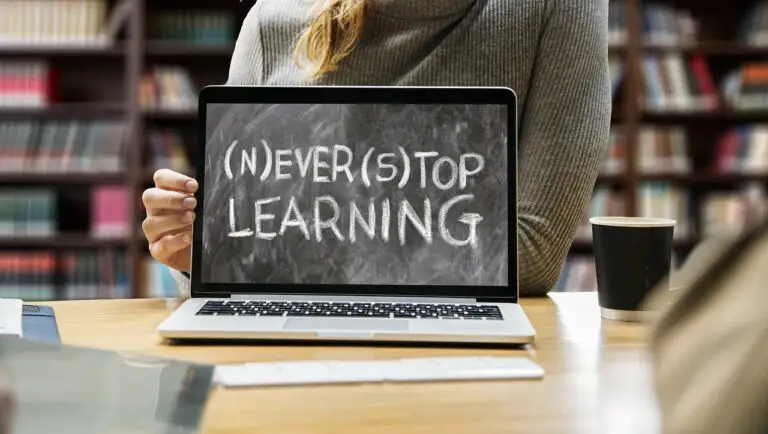Top 15 Group Dynamics and Team Dynamics for Retail and Business Industries

Effective group dynamics and team dynamics are crucial in the retail and business industries to foster collaboration, maximize productivity, and enhance customer satisfaction. In these fast-paced and customer-centric environments, cohesive teams can significantly impact sales performance, operational efficiency, and overall business success. Here are fifteen essential dynamics that contribute to thriving teams in retail and business industries.

Page Contents
- 1 Top 15 Group Dynamics and Team Dynamics for Retail and Business Industries
- 2 Meeting customer needs effectively is at the heart of successful customer service and business growth. Here are several tips and techniques to ensure you’re meeting customer needs consistently:
- 2.1 1. Understand Customer Expectations:
- 2.2 2. Provide Personalized Service:
- 2.3 3. Communicate Effectively:
- 2.4 4. Be Responsive and Accessible:
- 2.5 5. Focus on Customer Experience:
- 2.6 6. Handle Complaints and Issues Gracefully:
- 2.7 7. Seek Feedback and Act on It:
- 2.8 8. Train and Empower Your Team:
- 2.9 9. Build Long-Term Relationships:
- 2.10 10. Monitor and Measure Customer Satisfaction:
- 3 Understanding the psychology of team dynamics is essential in both the retail and business industries, where interactions between team members and customers play a crucial role in overall success. Here’s a deeper look into how psychology influences team dynamics in these environments:
- 4 Conclusion
Top 15 Group Dynamics and Team Dynamics for Retail and Business Industries
1. Customer-Centric Focus: Teams should prioritize understanding and meeting customer needs. Customer-centricity guides decision-making and ensures that all team efforts align with enhancing the customer experience.
2. Cross-Functional Collaboration: Encourage collaboration across departments such as sales, marketing, operations, and customer service to ensure a seamless customer journey and efficient business operations.
3. Sales and Service Excellence: Emphasize teamwork in delivering exceptional sales and service experiences. Teams should support each other to achieve sales targets while maintaining high service standards.
4. Adaptability and Flexibility: Teams must be adaptable to changing market trends, customer preferences, and operational challenges. Flexibility allows teams to quickly adjust strategies and processes to meet evolving demands.
5. Communication Clarity: Clear and frequent communication is essential for coordinating tasks, sharing information, and resolving issues promptly. Open communication channels ensure everyone is aligned with business goals.
6. Goal Alignment: Ensure that team goals align with broader organizational objectives. Clear alignment helps teams prioritize tasks effectively and work towards achieving collective targets.
7. Problem-Solving Skills: Equip teams with strong problem-solving abilities to address customer concerns, operational inefficiencies, and other challenges. Encourage creative thinking and collaborative problem-solving approaches.
8. Leadership and Empowerment: Empower team members to take ownership of their roles and contribute to decision-making processes. Effective leadership fosters a sense of accountability and motivates teams to strive for excellence.
9. Innovation and Continuous Improvement: Foster a culture of innovation where teams are encouraged to explore new ideas, products, and processes. Continuous improvement ensures that teams stay competitive and adapt to industry changes.
10. Time Management and Efficiency: Optimize time management practices to maximize productivity and minimize downtime. Efficient workflows and task prioritization enable teams to deliver results effectively.
11. Conflict Resolution: Equip teams with conflict resolution skills to manage disagreements and maintain positive working relationships. Addressing conflicts promptly prevents disruptions and fosters a harmonious work environment.
12. Training and Development: Invest in ongoing training and development programs to enhance team skills and knowledge. Continuous learning prepares teams to handle new challenges and excel in their roles.
13. Performance Metrics and Feedback: Establish clear performance metrics to measure team achievements and provide constructive feedback. Regular performance reviews help identify strengths, areas for improvement, and development opportunities.
14. Team Building Activities: Organize team-building activities to strengthen relationships, boost morale, and foster camaraderie among team members. Activities can include workshops, retreats, and social events that promote collaboration.
15. Resilience and Adaptation: Encourage resilience in teams to navigate setbacks and challenges effectively. Teams should be prepared to adapt strategies and learn from experiences to achieve long-term success.

Meeting customer needs effectively is at the heart of successful customer service and business growth. Here are several tips and techniques to ensure you’re meeting customer needs consistently:
1. Understand Customer Expectations:
- Listen Actively: Pay attention to what customers are saying and ask clarifying questions to fully understand their needs.
- Anticipate Needs: Use past interactions and data analytics to predict future needs and preferences.
- Empathy: Put yourself in the customer’s shoes to better understand their emotions and concerns.
2. Provide Personalized Service:
- Tailor Solutions: Offer personalized recommendations and solutions based on the customer’s specific requirements.
- Use Customer Data: Leverage customer data to personalize interactions and suggest relevant products or services.
3. Communicate Effectively:
- Clear Communication: Ensure information is conveyed clearly and concisely, avoiding jargon or technical language.
- Confirm Understanding: Recap conversations to ensure mutual understanding and agreement on next steps.
4. Be Responsive and Accessible:
- Prompt Response: Respond to inquiries, messages, and requests in a timely manner, ideally within 24 hours.
- Omni-channel Support: Offer multiple communication channels (phone, email, chat, social media) for customers to reach out.
5. Focus on Customer Experience:
- Consistency: Provide a consistent experience across all touchpoints and interactions.
- Ease of Use: Ensure products or services are user-friendly and intuitive, minimizing customer effort.
6. Handle Complaints and Issues Gracefully:
- Listen Without Interruption: Allow customers to express their concerns fully before offering solutions.
- Apologize and Take Responsibility: Acknowledge mistakes or issues and apologize sincerely, if applicable.
- Offer Solutions: Propose viable solutions or alternatives to resolve the issue promptly.
7. Seek Feedback and Act on It:
- Surveys and Feedback Forms: Use customer feedback surveys to gather insights and identify areas for improvement.
- Continuous Improvement: Act on feedback received to enhance products, services, or processes based on customer preferences.
8. Train and Empower Your Team:
- Customer Service Training: Provide ongoing training to equip employees with the skills and knowledge to handle various customer scenarios effectively.
- Empowerment: Empower frontline staff to make decisions and resolve issues autonomously within established guidelines.
9. Build Long-Term Relationships:
- Follow Up: Follow up with customers after a purchase or service interaction to ensure satisfaction and address any additional needs.
- Loyalty Programs: Offer incentives and rewards to loyal customers to foster long-term relationships and repeat business.
10. Monitor and Measure Customer Satisfaction:
- Metrics: Use key performance indicators (KPIs) such as Net Promoter Score (NPS) or Customer Satisfaction (CSAT) scores to track customer satisfaction levels.
- Analytics: Analyze customer behavior and trends to identify patterns and opportunities for improvement.
Understanding the psychology of team dynamics is essential in both the retail and business industries, where interactions between team members and customers play a crucial role in overall success. Here’s a deeper look into how psychology influences team dynamics in these environments:
1. Group Identity and Cohesion:
In retail and business teams, a strong sense of group identity fosters cohesion and collaboration. Team members identify with their roles and the organization’s mission, which strengthens their commitment to achieving shared goals. This cohesion is crucial in retail settings where teamwork directly impacts customer service and operational efficiency. Psychology suggests that when individuals feel part of a unified team, they are more motivated to perform well and support their colleagues.
2. Communication and Collaboration:
Effective communication is central to team dynamics in both industries. Clear and open communication channels facilitate coordination on sales strategies, customer service approaches, and operational tasks. Psychologically, teams that communicate openly are more likely to resolve conflicts quickly, share innovative ideas, and adapt to changing market demands. This fosters a collaborative environment where diverse perspectives contribute to creative problem-solving and continuous improvement.
3. Leadership and Motivation:
Leadership styles significantly influence team dynamics. In retail and business settings, effective leaders inspire motivation by providing clear direction, support, and recognition for achievements. Transformational leadership, which emphasizes empowerment and fostering a shared vision, has been shown to enhance team performance and job satisfaction. Understanding motivational psychology helps leaders tailor incentives and rewards that resonate with team members, boosting morale and productivity.
By implementing these tips and techniques, businesses can enhance their ability to meet customer needs effectively, build trust and loyalty, and differentiate themselves in competitive markets. Continuous commitment to understanding, communicating with, and responding to customer needs is key to sustainable business success and growth.
Conclusion
In conclusion, effective group dynamics and team dynamics are essential in the retail and business industries to drive performance, foster innovation, and deliver exceptional customer experiences. By prioritizing customer-centricity, cross-functional collaboration, communication clarity, and continuous improvement, organizations can build high-performing teams that contribute to sustainable business growth and competitive advantage in today’s dynamic marketplace.






